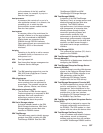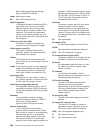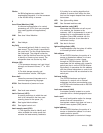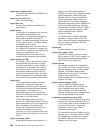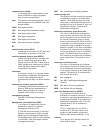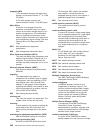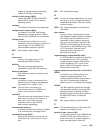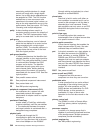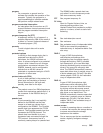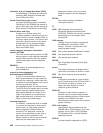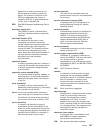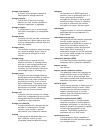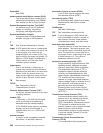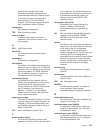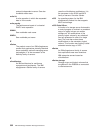program
On a computer, a generic term for
software that controls the operation of the
computer. Typically, the program is a
logical assemblage of software modules
that perform multiple related tasks.
program-controlled interruption
An interruption that occurs when an I/O
channel fetches a channel command word
with the program-controlled interruption
flag on.
program temporary fix (PTF)
A temporary solution to, or bypass of, a
problem diagnosed by IBM as the result of
a defect in a current unaltered release of
a licensed program. (GC)
promote
To add a logical data unit to cache
memory.
protected volume
In AS/400, a disk storage device that is
protected from data loss by RAID
techniques. An AS/400 host does not
mirror a volume configured as a protected
volume, while it does mirror all volumes
configured as unprotected volumes. The
DS8000, however, can be configured to
indicate that an AS/400 volume is
protected or unprotected and give it RAID
protection in either case.
protocol data unit (PDU)
A unit of data specified in the protocol of a
given layer and consisting of protocol
control information for the layer and,
possibly, user data for the layer.
pSeries
The product name of an IBM e(logo)server
product that emphasizes performance. It is
the successor to the RS/6000 family of
servers.
pseudo host
A host connection that is not explicitly
defined to the DS8000 and that has
access to at least one volume that is
configured on the DS8000. The FiconNet
pseudo host icon represents the FICON
protocol. The EsconNet pseudo host icon
represents the ESCON protocol. The
pseudo host icon labelled Anonymous
represents hosts connected through the
FCP protocol. Anonymous host is a
commonly used synonym for pseudo host.
The DS8000 adds a pseudo host icon
only when it is set to access-any mode.
See also access-any mode.
PTF See program temporary fix.
PV Links
Short for Physical Volume Links, an
alternate pathing solution from
Hewlett-Packard that provides for multiple
paths to a volume, as well as static load
balancing.
R
R0 See track-descriptor record.
rack See enclosure.
RAID See redundant array of independent disks.
RAID is also commonly expanded to
redundant array of inexpensive disks. See
also array.
RAID 5
A type of RAID that optimizes
cost-effective performance while
emphasizing use of available capacity
through data striping. RAID 5 provides
fault tolerance for up to two failed disk
drives by distributing parity across all the
drives in the array plus one parity disk
drive. The DS8000 automatically reserves
spare disk drives when it assigns arrays to
a device adapter pair (DA pair). See also
device adapter, RAID 10, and redundant
array of independent disks.
RAID 10
A type of RAID that optimizes high
performance while maintaining fault
tolerance for up to two failed disk drives
by striping volume data across several
disk drives and mirroring the first set of
disk drives on an identical set. The
DS8000 automatically reserves spare disk
drives when it assigns arrays to a device
adapter pair (DA pair). See also device
adapter, RAID 5, and redundant array of
independent disks.
random access
A mode of accessing data on a medium in
a manner that requires the storage device
to access nonconsecutive storage
locations on the medium.
rank One or more arrays that are combined to
create a logically contiguous storage
space.
Glossary 345



